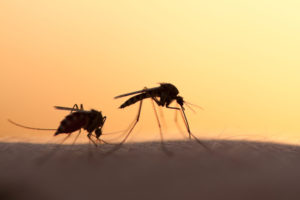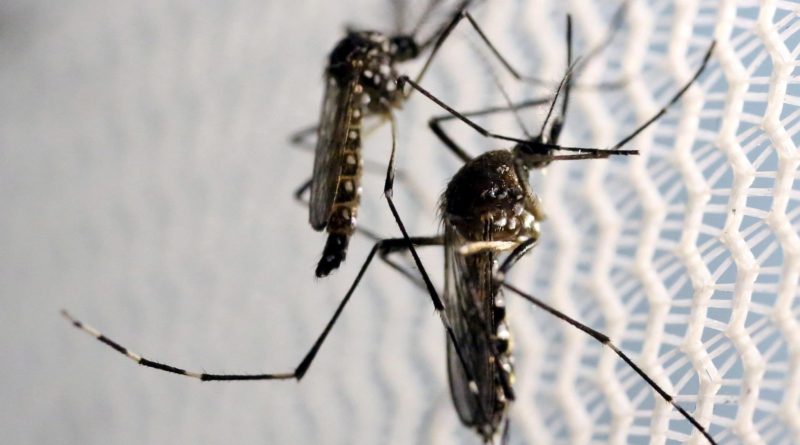Disabling Disease
All possible strategies need to be implemented to optimize the use of resources for prevention and control of Chikungunya
By Dr. SuneelaGarg / Dr. Neha Dahiya


Chikungunya was first reported in 1952, during an outbreak in southern Tanzania. The word Chikungunya originally came from the Kimakonde language, which is spoken by the indigenous people of southern Tanzania, which means “contorted”.
It refers to the contorted position taken by people when they are affected by joint pain. It is transferred from human to human by mosquitoes. Aedes Aegyptii and Aedes albopictus are the two main species of mosquito that spread the disease. These mosquitoes bite during the day and get infected when they take blood meal or feed on a person already infected with the virus. Infected mosquitoes are now able to spread the virus to other people through bites.

After the bite of an infected mosquito, symptoms usually start between 2 to 12 days. The common symptoms are fever, joint pain, joint swelling, headache, muscle pain, and rash. Chikungunya does not often result in death, but the symptoms can be disabling. Most patients feel better within a week but, the joint pain may persist for months. Newborns, older adults (≥65 years), and people with medical conditions such as high blood pressure, diabetes, or heart disease are at higher risk for complications and severe diseases.
According to a Delhi municipal report released on September 19, 2016, a total of 2625 Chikungunya cases and 3251 clinically suspected cases were recorded in the national capital till 18 September 2016, marking a massive rise of nearly 150% from the previous count.
Most of the symptoms of dengue and Chikungunya are same but, hemorrhagic manifestations are rare in Chikungunya and shock is also not observed. Usually patients recover fully, but in some cases joint pain may continue for several months, or even years. Most patients don’t face any complications, but in older people, it can act as a contributing factor to the cause of death.
Diagnosis
Various methods can be used for diagnosis. Samples collected during the first week after the onset of symptoms should be tested by both serological and virological methods (RT-PCR) such as enzyme-linked immunosorbent assays (ELISA), which can confirm the presence of IgM and IgG anti-Chikungunya antibodies. IgM antibody levels are highest 3 to 5 weeks after the onset of symptoms.
Treatment
There is no specific antiviral drug treatment for Chikungunya. Primary aim of treatment is to relieve the symptoms, including the joint pain using anti-pyretic, analgesics and fluids. Currently, there is no vaccine available for the disease.
Strategies for prevention and control of Chikungunya
Integrated vector control: Integrated Vector Management (IVM) is defined as “a rational decision-making process to optimize the use of resources for vector control” (WHO). IVM is based on the promotion and use of a many interventions alone or in combination which is selected on the basis of diseases, local knowledge of the vectors, and the other factors that affect transmission. The IVM approach addresses several diseases simultaneously, because some vectors such as aedes can transmit more than one disease and some interventions are effective against several vectors. This includes the use of insecticides treated bed nets, and long lasting insecticidal nets.
Environmental Control: The major environmental management methods used for control of Aedes mosquito are:
Environmental Modification: Permanent physical change of vector habitats. For example, improved water supply, mosquito proofing of overhead tanks, cisterns.
Environmental manipulation: Temporary changes to habitats of vector which include management of or removal of “natural” and artificial breeding sites. Changes in human environment to reduce man mosquito contact by proofing of houses with screens on doors/windows.
Biological Control: Larvivorous fishes can be used for control of Ae. Aegypti in large water bodies and endotoxin-producing bacteria, Bacillus thuringiensis serotype H-14 (Bt H-14) is also an effective mosquito control agent.
Chemical Control: Chemical control measures like larvicides, adulticides can be used. Since Aedes breeds in clean water, which is stored and used for household purposes, most commonly used larvicide is temephos, an insecticide being used under the National vector borne disease control program. The recommended dose for application of Temephos (50 EC) is 1 ppm (1 mg per liter of water). Pyrethrum spray and Malathion fogging are most common methods which are used as adulticide.
Legislative Measures: Suitable laws and byelaws should be implemented for regulating storage/utilization of water by communities. Various legislatives measures include model civic byelaws, building construction regulation act, environmental health act, health impact assessments etc.
Community Mobilization: Can be done through health education. Involvement of household for Aedes mosquito control is of top importance as the problem revolves mainly around measures, intensifying efforts to reduce actual or potential larval habitats in and around houses by various methods like covering all water containers in the house to prevent fresh egg laying by the mosquito. Drying and emptying water containers like coolers, bird baths, pets’ water bowls, plant pots, at least once each week. Regular checking requires for clogged gutters and flat roofs that may have poor drainage. Introducing larvivorous fishes e.g., gambusia in ornamental water tanks.
At Individual level- Personal protection like wearing full sleeves clothes and using repellents are common means of protection against mosquitoes and other biting insects. Various household insecticides like, mosquito coils, pyrethrum space spray and aerosols have been widely used for personal protection against mosquitoes.
At Community Level- People should form groups or associations such as RWAs to supplement and reinforce efforts at household level. These groups can launch awareness campaigns on disease and seek collaboration for prevention of mosquito breeding and protection from mosquito bites. Community activities against larvae and adult mosquitoes can include cleaning and covering water storage containers.
Other measures include keeping the surroundings clean and improving basic sanitation measures, burning mosquito coils to kill or repel the mosquitoes and eliminating outdoor breeding sites, screening houses, cleaning weeds and tall grass to reduce available outdoor resting places for adult mosquitoes, promoting use of insecticide treated nets and curtains to kill mosquitoes attempting to bite through the nets or resting on nets and curtains, organizing camps for insecticide treatment of community owned mosquito nets/curtains. In case water containers cannot be emptied, Temephos (1 ppm) should be applied on a weekly basis in coordination with the health authorities, mobilizing households to cooperate during spraying / fogging.
At Institutional Level: weekly dengue surveillance should be done.
Surveillance Intensification of epidemiological and entomological surveillance should be done and reporting of fever cases should be closely monitored.
Intersectoral convergence is a very crucial activity for prevention of Chikungunya and it requires cooperation of various departments to avoid breeding of mosquitoes.
(The authors are from Department of Community Medicine, Maulana Azad Medical College, New Delhi)

